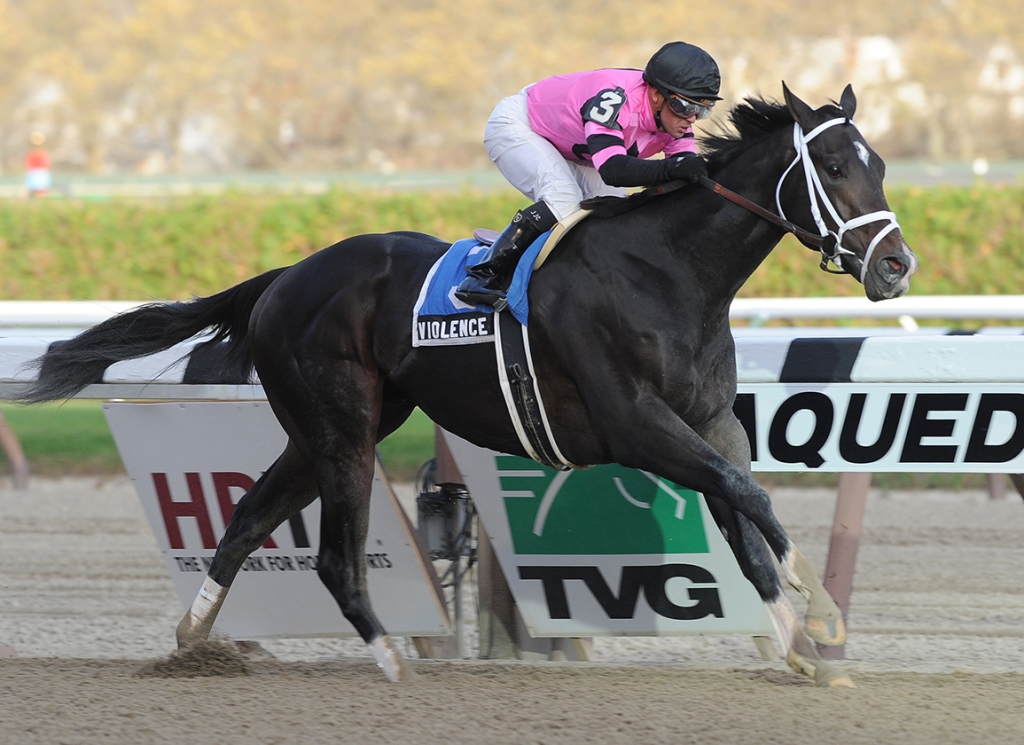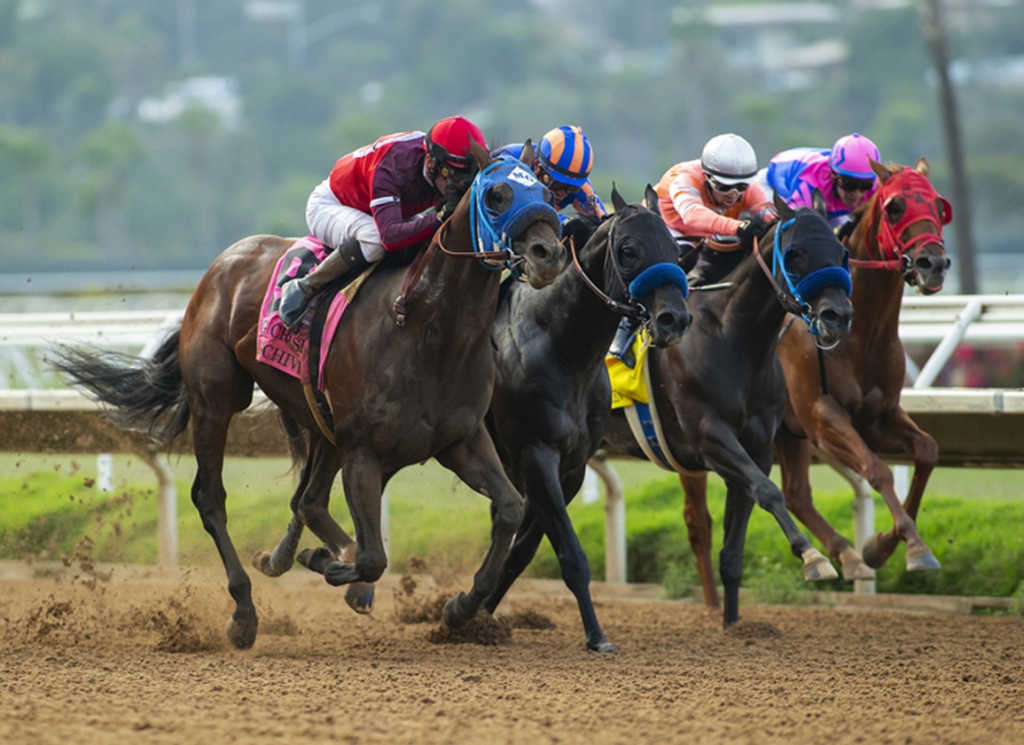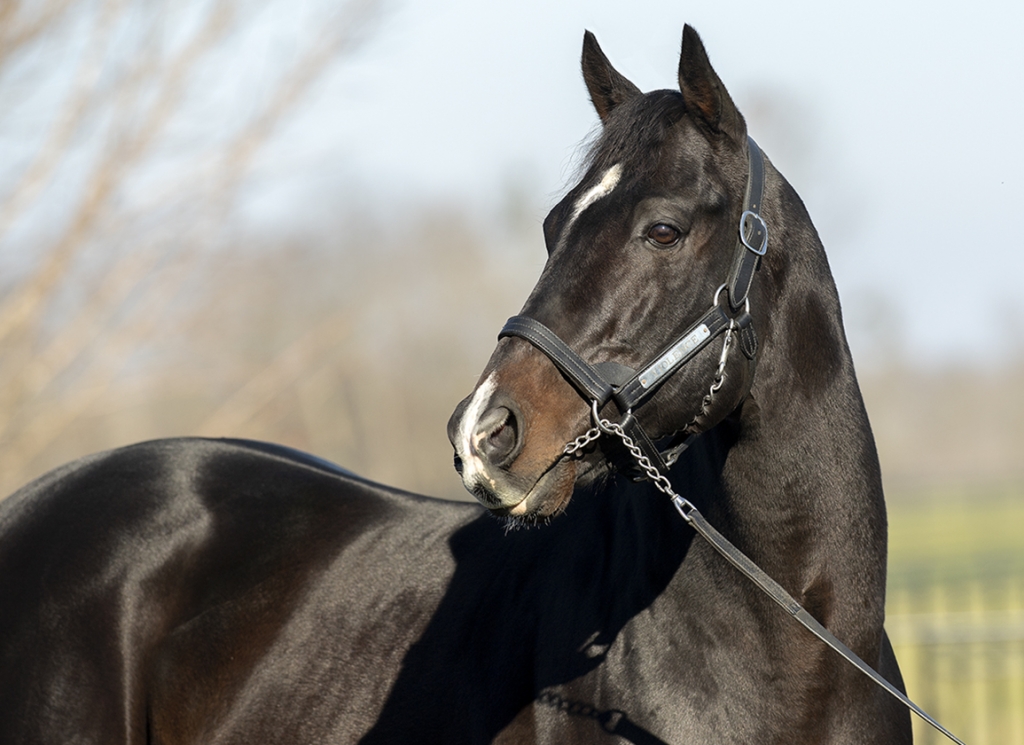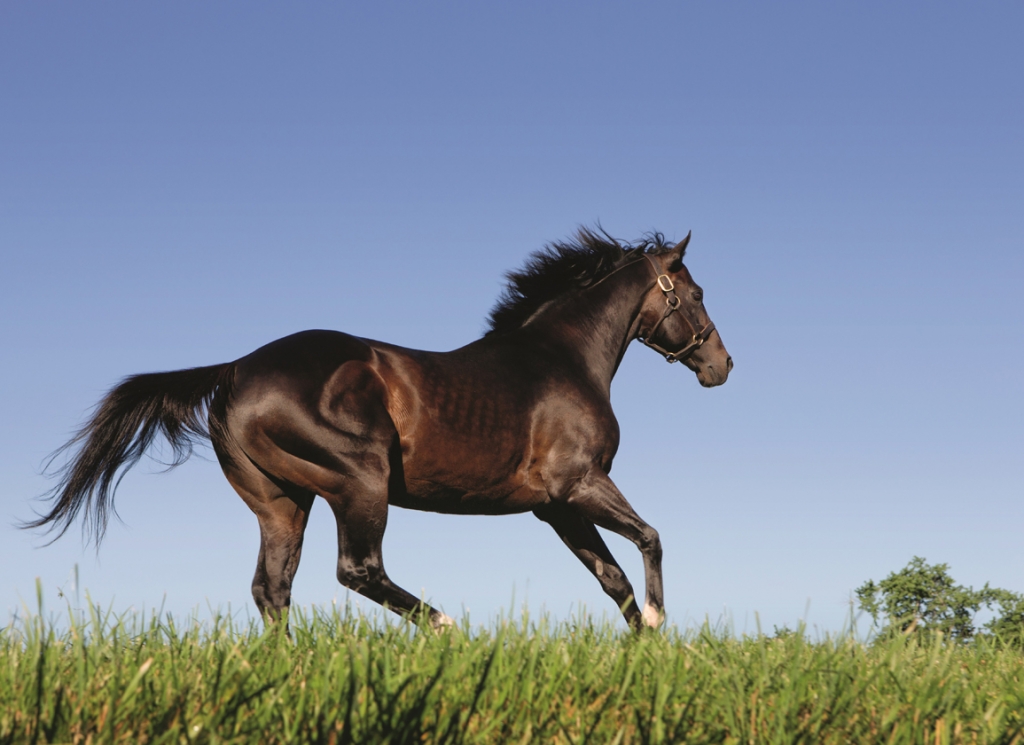In “Making Claims,” Paulick Report bloodstock editor Joe Nevills shares his opinions on the Thoroughbred industry from the breeding and sales arenas to the racing world and beyond.
My Eclipse Awards ballot is shared publicly as a member of the National Turf Writers and Broadcasters' bloc of voters, so in the interest of transparency, I'll share how I filled it out, along with my reasoning for each category.
Let's address a big elephant in the room. I didn't vote for Bob Baffert in the trainer category. I also didn't vote for any horse that remained in Baffert's barn for the entire year, or anyone in the owner category that kept horses with him after the Derby positive, allowing for a reasonable amount of time to move horses out of his care.
Regardless of where one falls on spectrum of what he did, how much it did or didn't affect Medina Spirit's performance, and the degree to which he should be punished for it, it's clear that the lightning rod that Baffert has created for himself and the sport has been largely self-constructed. He called the press conference to announce the Derby positive himself, before any public regulatory announcement. He went on multiple national news programs on his own accord and created such bad narrative for the sport that it spun off at least two biting late-night show parodies. His drawn-out legal battles in front of boards and judges have furthered a culture in the sport that consequences can be evaded with enough lawyer power, and the cycle just seems to continue because of it.
The public's default emotion toward horse racing is distrust. One man is not solely responsible for this, but that one man's actions directly within the sport have been a driving force behind it. It's going to look really bad if Baffert hoists a trophy (or trophies) awarded by an industry vote, and I won't be the one to put it in his hands.
Furthermore, Baffert is allowed the funding and oxygen to continue this cycle in large part because his roster of owners keeps supplying him with horses, and they share in the blame for the public perception of the sport. I've written about this at length.
I've seen arguments that it's not fair to the horses to disqualify them because of their human connections, but those human connections are the ones that will receive the trophy, the acclaim, and the money that comes with having a champion. Eclipse Awards night will just be another Thursday for the horse, the same as the one next to them.
Now seems like a good time for my annual Eclipse ballot disclaimer…
If you think I'm off-base with any of my votes, just remember these two things: First, the voting is closed, so nothing I say here can swing any undecided voters. Second, back in 2011, one intrepid voter chose Drosselmeyer as champion turf male in a campaign where his lone start on grass was a seventh-place effort. No matter how much we might disagree on who should be placed where, please understand that someone out there will go further off the deep end than any of us could imagine and cancel me out.
Let's get on with it.
2-Year-Old Male
1. Jack Christopher
2. Gunite
3. Pappacap
Removing the Breeders' Cup Juvenile winner and a big chunk of the West Coast contingent due to the above restrictions made this division a lot harder to parse out. Jack Christopher got the nod here, both for the dominance of his wins and the strength of schedule. The Grade 1 Champagne Stakes boasted arguably the strongest 2-year-old field for a major race outside the Breeders' Cup, and the son of Munnings was never tested. It's a shame he got hurt before he could prove it against the best, but he might have already been the best.
The two sons of Gun Runner behind him were split by a hair, but I gave Gunite the runner-up spot based on his Grade 1 win in the Hopeful Stakes. Pappacap got close to that Grade 1 a couple times, including a runner-up in the Breeders' Cup Juvenile, but I'd be hard-pressed to give an Eclipse to a horse that didn't have that win at the highest level.
2-Year-Old Female
1. Echo Zulu
2. Juju's Map
3. Pizza Bianca
One of the easier categories to sort out. Echo Zulu was the best in her class from the jump, and she was a driving force in sire Gun Runner's record-setting freshman season. Juju's Map solidified her status on the podium with her runner-up effort in the Breeders' Cup Juvenile Fillies, and Pizza Bianca's strong campaign on the turf deserved a spot in the program.
3-Year-Old Male
1. Essential Quality
2. Hot Rod Charlie
3. Dr. Schivel
Essential Quality has been the cream of the crop since last year, and he continued to prove his class in 2021 with wins in the Belmont Stakes and Travers Stakes, the G2 Blue Grass Stakes and Jim Dandy Stakes, and solid tries in the Kentucky Derby and Breeders' Cup Classic. Even in defeat, he never ran a true dud, and in victory, the Tapit colt lived up to every ounce of the hype he set up in his championship juvenile season. A deserving winner.
It was a broad division behind Essential Quality, but one that spent a lot of time beating each other up, making them hard to sort out. Hot Rod Charlie got the second spot for running a consistent campaign, getting his Grade 1 chip in the Pennsylvania Derby, and holding his own against older foes in the fall. Few contemporaries put together as complete a season as Hot Rod Charlie. You'll see why Dr. Schivel made the top three in a bit.
Where's Life Is Good? He had two graded wins against older rivals – the G2 Kelso and the G1 Breeders' Cup Dirt Mile – but even if we remove the Baffert starts from his record, I didn't feel like his wins stood up against the top three. The Kelso win came against a depleted field of three rivals and the Dirt Mile wasn't loaded with killers, either. I couldn't get there with him on strength of schedule.
3-Year-Old Female
1. Malathaat
2. Clairiere
3. Search Results
Malathaat had this one pretty much in the bag before the Breeders' Cup Distaff, but finishing within a half-length of the winner in a blanket finish sealed the deal for the three-time Grade 1 winner. All five of the Curlin filly's starts last year were in Grade 1 contests, and none were shorter than 1 1/16 miles. The definition of class.
Clairiere's campaign was perhaps a little less consistent than that of Search Results, but she got the head up for second based on having a slightly more impressive graded stakes record, and for bringing her shoes to every dance. If Search Results had managed to get the better of Malathaat in their tight Kentucky Oaks battle, this list might look very different.
Older Dirt Male
1. Knicks Go
2. Maxfield
3. Art Collector
A slam dunk on top. Knicks Go set himself up as a potential division leader when he won the G1 Pegasus World Cup Invitational, and he overcame a mid-season swoon to secure that position with a fall campaign that saw the son of Paynter improve with every start on his way to an authoritative Breeders' Cup Classic triumph.
With one clear horse on top, figuring out the next ones in line proved challenging. Maxfield was something of a horse-for-course in 2021, going three-for-three at Churchill Downs including the G1 Clark Stakes, and one-for-four away from Louisville. However, he faced strong fields throughout the year and was never worse than a competitive third. Few in the division could hang their hat on a resume like that. Art Collector came to life once he was moved to the Bill Mott barn, and a win in a stacked G1 Woodward Stakes field helped him secure the third spot.
Older Dirt Female
1. Letruska
2. Shedaresthedevil
3. Ce Ce
Heading into the Breeders' Cup Distaff, the only way Letruska was in danger of being knocked off her perch was if Shedaresthedevil won with flair. Neither had their best day at Del Mar, so the order stayed the same.
As it stands, Letruska beat practically every serious horse in her division during a campaign that saw her win four Grade 1 races at four different tracks. Had the daughter of Super Saver won the Distaff with aplomb and a few other races were taken by outsiders, she could have ended up with the Horse of the Year trophy.
Shedaresthedevil won a pair of Grade 1s last year, and her lone defeat came against Letruska in the G1 Ogden Phipps Stakes, two starts after she beat Letruska in the G2 Azeri Stakes. She didn't entirely control her own Eclipse destiny heading into the Breeders' Cup, but she could have put herself in the hunt with a win. Like Dr. Schivel, you'll see why Ce Ce made the podium in a little while.
Male Sprinter
1. Dr. Schivel
2. Golden Pal
3. Jackie's Warrior
The kids are alright. All three of my finalists were 3-year-olds with a legitimate case at the top spot. Dr. Schivel ended up on top because of his ability to stand up to older foes throughout the season. Four of his five starts came against older opponents, including wins in the G1 Bing Crosby Stakes and G2 Santa Anita Sprint Championship Stakes, and a second by a nose in the Breeders' Cup Sprint where he looked like he had it won until the last half-jump. The Violence colt would have been the top contender as an older horse, but the fact that he did it when he didn't necessarily have to leave his division makes it all the more impressive.
The only dud Dr. Schivel threw came in the G1 Malibu Stakes, where he ran into a freak in Flightline, and he was wrapped up after a nightmare trip made it clear he wasn't going to receive a serious check. Nothing wrong with protecting the horse.
Golden Pal was by far the best turf sprinter in the country last year (and perhaps a bit more. Stick around), and his freak performance in the Breeders' Cup Turf Sprint might have been the most impressive effort of the weekend. If he'd have had one more start somewhere along the way, I'd have had to seriously consider putting him on top. It surprised me a bit that Jackie's Warrior ended up third on my ballot, considering he'd have been a fringe Horse of the Year contender with a win in the Breeders' Cup Sprint, but he lacked the bona fides against older horses like Dr. Schivel after finishing sixth at the Breeders' Cup, and Golden Pal got himself up to second with his own Breeders' Cup effort.
Female Sprinter
1. Ce Ce
2. Bella Sofia
3. Bell's the One
This one will probably end up going to Gamine, but Ce Ce toppling her in the Breeders' Cup Filly and Mare Sprint certainly made this process easier for my purposes. The Elusive Quality mare ran a consistently solid campaign through the season, and she took her show on the road, winning graded stakes races at Gulfstream Park, Santa Anita, and Del Mar, with a solid effort in Saratoga sandwiched in between.
Bell's the One could have improved her position with a strong Breeders' Cup, but in her absence, Bella Sofia had a Grade 1 win where he rival didn't in the Test.
Turf Male
1. Golden Pal
2. Colonel Liam
3. Smooth Like Strait
International horses took turns eating the turf male division's collective lunch throughout the year, but I tend to resist runners from outside our borders on top unless we truly have no better option. Fortunately, Golden Pal came through for us. The Uncle Mo colt's freakish Breeders' Cup Turf Sprint might have been the most dominant performance of the weekend, and he was just as disruptive facing older competition in the G2 Woodford Stakes a start earlier. I'd have liked his campaign to be a little longer, but when he did run on U.S. soil, he had no peer.
Colonel Liam was the best of the rest. Though his campaign was cut short, he won the division's first major heat in the G1 Pegasus World Cup Turf, and dead-heated for another Grade 1 score in the Turf Classic. Smooth Like Strait lost a lot more races than he won last year, but he was never more than a half-length behind the winner and never worse than third. Add in a Grade 1 win in the Shoemaker Mile, and the hard-luck horse did enough to deserve recognition.
Turf Female
1. War Like Goddess
2, Santa Barbara
3. Althiqa
Another one where the global horses cherrypicked a lot of the big races. War Like Goddess stayed hot from March to November, and if the English Channel filly had gotten the better of a blanket finish in the Breeders' Cup Filly and Mare Turf, there would have been no question at all. That effort was enough to give her the duke, if by a slim margin.
The two horses behind her each came from overseas to win a pair of Grade 1 races as part of greater international campaigns. Santa Barbara and Althiqa had mirror-like domestic campaigns, but Santa Barbara got the nod for second for doing just a little more, both here and abroad.
Loves Only You seems to have been a popular choice in this division, but with just one U.S. start won by a slim margin, and several other viable candidates on the ballot, I didn't feel the need to flip the emergency “Goldikova” switch.
[Story Continues Below]
Steeplechase
1. Abstain
2. Abstain
3. Abstain
I can already feel the performative social media fury bubbling up. Listen, I watched more jai-alai matches this year than steeplechase races (the Langhans brothers are the future of jai-alai in America, especially Benny).
My reasoning remains the same as last year: I abstain out of respect. Nothing in my job requires me to take even a passive interest in the steeplechase races. I know none of the players, the races are often held at venues I'm not familiar with in terms of geography or esteem, and I'm not aware of the unwritten class system that can separate one Grade 1 race from another (like how winning the Kentucky Derby means more than winning the Malibu Stakes). It's an entirely different culture.
If a group of basketball writers were brought in to decide the Eclipse Awards, people would erupt, and rightfully so. It would be disrespectful to the hard work done by an entire industry to have someone outside the circle decide who among them was the best. That's why I leave the steeplechase division to the people who know what they're doing, and don't let my uninformed vote interfere with that. Someone will get a trophy whether I vote or not.
Owner
1. Godolphin
2. Klaravich Stables
3. Peter Brant
Godolphin earned more than twice as much as next-closest Klaravich Stables last year, and its 11 Grade 1 victories was nearly as many as the next three contenders combined. The blue team went bonkers during the Breeders' Cup, and Essential Quality brought home the Belmont Stakes and the Travers.
Klaravich Stables was often the next-closest rival in the big statistical categories, driven by its usual dominance of the East Coast turf races. If Klaravich didn't win those races, Peter Brant often did.
Breeder
1. Godolphin
2. Stonestreet Thoroughbred Holdings
3. Angie Moore
Godolphin obliterated the breeder standings with many of the same horses that helped it obliterate the owner standings. They won with local-born heroes like Essential Quality and Mystic Guide, while their foreign-born horses ran roughshod over the Breeders' Cup. An international powerhouse operating at full strength.
Stonestreet had the kind of year that would have won the trophy in a lot of other seasons, led by top sophomore fillies Malathaat and Clairiere. Angie Moore, the breeder of Knicks Go, makes the list for doing the most with the least, posting only six starters this season as a breeder, and having one of them happen to be the best horse in training.
Jockey
1. Joel Rosario
2. Flavien Prat
3. Luis Saez
Joel Rosario has been overdue for one of these for a long time, and he probably should have won it back in 2013 when he seemed to be winning everything he entered during the first half of the year. As it stands, he rode the best older horse in the game (Knicks Go), the best 2-year-old filly in the game (Echo Zulu), and the best 3-year-old filly in the game (Malathaat). He led all North American jockeys by earnings and graded wins, he won a pair of Breeders' Cup races, and he had over 1,000 starts, meaning he got on more than just the elite stock. Give the man his flowers.
Flavien Prat's 11 Grade 1 wins were the most of any North American rider in 2021, and his herculean effort to win with a broken rein aboard Dr. Schivel in the G1 Bing Crosby Stakes was the kind of showcase effort that proves it was more than just compiling stats on the West Coast. Luis Saez was the first-call rider for Godolphin's top domestic-born runners, helped turn Art Collector into a top-tier horse in the handicap division, and with over 1,500 starts, he put in the kind of schedule most of his peers at the top of the jockey pecking order couldn't come close to matching.
Apprentice Jockey
1. Jessica Pyfer
2. Alexis Centeno
3. Joree Scriver
It's not easy for a young rider to stand out on the ultra-competitive Southern California circuit, but this year's class had two that made an impact.
Jessica Pyfer led all apprentice jockeys by earnings in 2021, and she was second by wins. She was always on the fringe of the top ten by wins at each of the circuit's major meets, highlighted by a sixth-place finish during Santa Anita's elite winter/spring meet, where she rode against some of the best in the country. She also made noise at the highest levels, earning a Grade 2 placing aboard Road Rager in the Great Lady M Stakes at Los Alamitos.
Alexis Centeno lost his bug in mid-August, but he made his time count, finishing 12th in the standings during Santa Anita's winter/spring meet, and riding well in California and the Midwest. He also hooked an incredibly live mount in Brickyard Ride, who he guided to a win in the G2 San Carlos Stakes and a second in the G3 Kona Gold Stakes. Joree Scriver is a little off the beaten path, but she won meet titles at Grants Pass Downs and the Elko County Fair, finished in the top 10 during a long meet at Turf Paradise, and won four stakes races last year. It's hard for an apprentice rack up wins and earn a meet title anywhere, but to do it against the wily veterans of the bullring circuit requires a special kind of toughness.
Trainer
1. Brad Cox
2. Todd Pletcher
3. Chad Brown
Brad Cox's barn continued to get bigger and better in 2021, leading all trainers by earnings, tying for the lead by Grade 1 wins, and finishing fourth by total wins. He took home the Breeders' Cup Classic, the Belmont Stakes, the Travers, the Haskell and the Pegasus World Cup Invitational, among many others. Heck, he might even end up with last year's Kentucky Derby trophy on his mantle sometime in the distant future.
Todd Pletcher nosed out Chad Brown for the most graded wins in 2021, he saddled Life Is Good to a win in the Breeders' Cup Dirt Mile, and he'll have the likely 3-year-old champion filly in Malathaat. Chad Brown did what Chad Brown does best and dominated the East Coast's turf races.
Horse of the Year
1. Knicks Go
2. Essential Quality
3. Letruska
There was only one true choice here. Knicks Go won when it mattered, beat everyone he needed to beat, and even his quasi-slump in the middle of the year only saw him finish fourth at worst. Once he ran off in the Breeders' Cup Classic, it was all over.
Essential Quality was consistently elite throughout the year in the biggest races, and if Knicks Go had been erased from the face of the earth, I'd feel confident giving him the Horse of the Year trophy.
Oh, what could have been for Letruska. If she'd have won the Distaff and chaos reigned in the Classic, she could have very well ended up with the golden statue after a dominant campaign up to that point in arguably the deepest division we've got. Unfortunately, a white-hot pace fizzled her chances in the Distaff and any hope of the top spot here. Still, the conversation of racing in 2021 involves this mare, and she belongs at the table.
The post Making Claims: Submitting Eclipse Votes While Navigating The White-Haired Elephant In The Room appeared first on Horse Racing News | Paulick Report.
Source of original post




